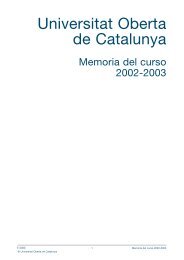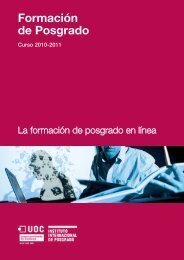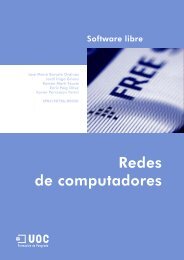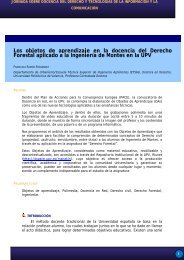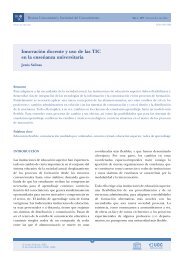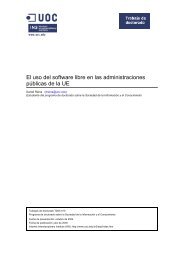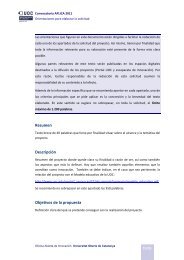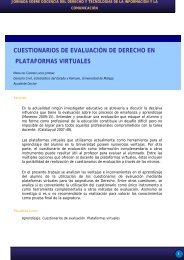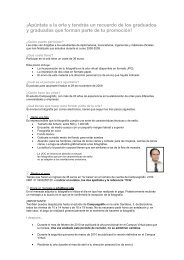e-governance and citizen information - Universitat Oberta de ...
e-governance and citizen information - Universitat Oberta de ...
e-governance and citizen information - Universitat Oberta de ...
Create successful ePaper yourself
Turn your PDF publications into a flip-book with our unique Google optimized e-Paper software.
E-<strong>governance</strong> <strong>and</strong> Citizen Information 100 Managing Technological Innovation6.2. Electronic Government Promotion StrategiesThe Catalan Administration's current technological innovation <strong>and</strong> administrative changestrategy appears to be aimed, above all, at putting in or<strong>de</strong>r the existing high <strong>de</strong>gree of dispersionin the Generalitat's <strong>information</strong> systems. A planned, parallel objective is for savingsin resources <strong>and</strong>/or their optimal utilisation. In this sense, there seems to have been a <strong>de</strong>velopmentfrom a strategy more orientated to <strong>de</strong>veloping exemplary <strong>and</strong> highly visibleprojects towards the putting into place of more <strong>de</strong>limited initiatives with greater short-termimpact.6.2.1. Rationalisation of ResourcesAs we mentioned, the Generalitat of Catalonia’s current strategy has as one of its principalaxes the rationalisation of the functioning of the organisation <strong>and</strong> in particular of the Administration's<strong>information</strong> systems, for example, by unifying databases <strong>and</strong> improving the waythey work. Thus, it highlights the objective of increasing efficiency <strong>and</strong> the strong activity thathas been <strong>de</strong>veloped in or<strong>de</strong>r to make a diagnosis of the state of the situation.Thus, for example, in the analysis of projects highlighted by the <strong>de</strong>partments of the Generalitatwe have found that amongst the objectives most frequently mentioned were thereduction of time spent on red tape <strong>and</strong> an increase in the efficiency of processes (digitisation,simplification <strong>and</strong> automation of processes would be ways of achieving it). In addition,the great majority of projects have an internal orientation that directly affectsaspects of the back-office <strong>and</strong> organisation. This shows differences with the earlier stagein the <strong>de</strong>velopment of e-government, where the priority appeared to be the impact on <strong>citizen</strong>s.In fact, now it is stated that between <strong>de</strong>partments, internal orientation carries slightlymore weight than the orientation to the user: there is a clear perception that in or<strong>de</strong>r toachieve an improvement in the service provi<strong>de</strong>d to the end user, it is first necessary to improvethe internal situation of the Administration itself (77% of projects aim to do this). Onthe other h<strong>and</strong>, savings <strong>and</strong> homogenisation appear as objectives to be achieved by themechanisms themselves: the unification of databases, the use of common tools, etc. “it'sabout putting on the table the i<strong>de</strong>a that it's not necessary for each administrative unit <strong>and</strong>sub-unit to have its own website; what is nee<strong>de</strong>d is to avoid <strong>information</strong> being hid<strong>de</strong>naway” (P77). In other words, it is about rationalising both economic resources <strong>and</strong> the <strong>information</strong>itself, ren<strong>de</strong>ring it more accessible.http://www.uoc.edu/in3/pic




